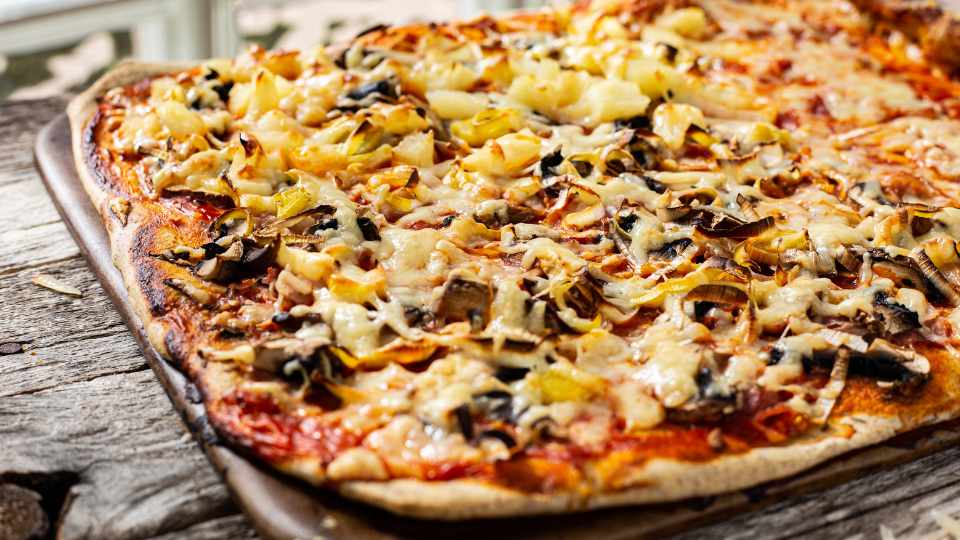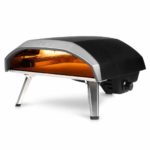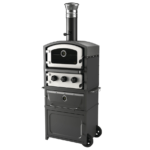How to Use a Pizza Stone – Your Ultimate Guide
If you’re looking to prepare restaurant-grade pizza in the comfort of your own home, then look no further than pizza stones.
It’s one of the most straightforward kitchen appliances that you can have and trust us when we say that once you start making pizzas with a stone, takeout will be a thing of the past! However, if this is your first time using it – we understand how daunting it may seem.
Ready to learn the ins and outs of using a pizza stone? Look no further! Here, we’ll cover all that you need to know–from understanding what they are and how they work. Let’s get started!
A Step-by-Step Guide to Using a Pizza Stone

Pizza stones are an easy-to-use, yet revolutionary tool that can help you craft delicious pizzas right in the comfort of your own home. Here is a comprehensive guide to getting you started on making restaurant-quality pies with your very own pizza stone!
Step 1 – Preheating the Oven
To achieve the optimal temperature for your pizza, it is essential to heat up your oven and pizza stone before you place the dough onto them. Aim for an internal temperature of approximately 500°F or 260°C in both devices. Place the stone inside the oven at least one hour prior so that it can reach its ideal point when ready to use.
Step 2 – Prepping Your Dough
Before you pop your pizza in the preheated oven, it’s best to let your dough come up to room temperature. Trying to place cold or frozen dough on a hot pizza stone will cause it to crack and split, making for an unpleasant experience. To prevent this from happening, make sure that your dough has reached room temperature before baking!
Step 3 – Place the Pizza in the Oven
Once your stone and oven reach the ideal heat, you can carefully place the pizza into the oven by using a pizza peel. If you don’t have one on hand, a large spatula or cutting board will do; however, take extra precautions to make sure not to drop any dough!
Step 4 – Cooling the Stone
One of the most frequent blunders people commit with pizza stones is removing them from the oven right after baking and placing them on their countertop. Such sudden temperature fluctuations can be detrimental to a stone, potentially resulting in cracking – thus why it’s essential that you let your stone remain in the oven until it cools down naturally.
Storing your pizza stone in the oven is much simpler than taking it out and putting it away after each use. Plus, leaving it there can also reduce the risk of breakage due to its consistent location. Once you’re finished with baking and have allowed the stone to cool down, put aside all worries about where to stash this useful kitchen tool; simply keep it securely in place within your oven!
What Are Pizza Stones?
Although it may seem like a pizza stone is made of rock, that’s not actually the case. Rather than being composed of granite or other types of stones, these round plates are crafted from thick and reliable clay – approximately one inch in depth – designed to fit any regular oven with ease.
To achieve the ideal texture for pizzas such as Neopolitan, you need high temperatures – which a pizza stone is uniquely equipped to provide. What makes it so special? Its capacity to absorb and retain heat! When you preheat your stone in the oven, it’s like making sure that all of your ingredients are ready before adding them together; once everything is properly warmed up and prepared, cooking time drastically shortens. The result: an amazing meal with a perfectly cooked crust every single time.
If you’ve ever crafted your own dough to bake pizza at home, only for the crust to come out wrong no matter how long it was kneaded, then don’t worry – chances are that your oven wasn’t hot enough. Home ovens usually can’t reach temperatures high enough for baking a perfect pizza which is why most renowned pizzerias use brick or stone-based traditional ovens in their kitchens. It’s worth investing the money and effort into these kinds of devices if you want authentic Italian dishes from the comfort of your own kitchen!
The entire purpose of a pizza stone is to recreate the conditions inside a traditional pizza oven. These stones are designed to be pre-heated inside your oven before you bake the pizza so that the bottom of the crust is exposed to higher heat the second you place it in the oven.
This creates that beautiful brown crust underneath the pizza with a slight crunch.
And while they’ve grown in popularity recently, baking stones are one of the earliest cooking tools in history. In fact, researchers trace the earliest use of these stones all the way back to the Palaeolithic area.
So, it’s safe to use a pizza stone as a tried-and-tested method for a high-quality dish. Pizza stones are the only way to get restaurant-quality textures and flavours in your pizza without investing in expensive and impractical brick pizza ovens.
Why Use a Pizza Stone?
If you’ve tried making pizza at home, there’s a chance that it didn’t quite satisfy your cravings. For many people, there’s something about restaurant pizza that’s different from anything you can get at home for yourself.
However, the only reason your pizza didn’t quite hit the spot like a restaurant pizza is likely because of the texture.
Think back to the last time you had a great pizza and try to remember what made it stand out. There’s a high chance that aside from the well-curated and high-quality toppings, the reason it was good was the crust.
That said, getting a perfect pizza crust is easier than you might think; all you need is the right temperature.
You might have noticed that your favourite pizza restaurant has a giant traditional pizza oven in its kitchen. While this might seem like overkill, it’s actually the secret to their great-tasting pies. Traditional pizza ovens get very hot, which is how to get a great crust on your dough.
But if you’re a home cook, you probably don’t have the time or space to install these ovens.
So, what’s the next-best solution?
A pizza stone is an amazing way to get the same results at home that you would find in a traditional pizzeria. These unglazed clay disks are superb heat absorbers and can hold onto their warmth for longer periods of time – so if you preheat your oven with one inside, your dough will have access to scorching temperatures as soon as it’s placed within! This enables superior crust browning and texture development. It may not be necessary, but adding a pizza stone into the baking equation presents an excellent opportunity to make homemade pies up several levels!
Using Your Pizza Stone for the First Time
There aren’t any special instructions or rules around using your pizza stone for the first time. These tools aren’t like cast-iron pans that require seasoning before first use. However, make sure to visually inspect your pizza stone before using it to make sure there are no cracks or chips.
Cleaning and Maintaining Your Pizza Stone
Although pizza stones are tough and strong, they still require proper care to ensure that they last. Without the right maintenance procedures, these clay plates can easily become cracked or chipped when exposed to high oven temperatures. Maintaining a pizza stone is essential for any at-home chef who wants consistent results each time!
To begin, it is essential to remember that oil should never be used on a pizza stone. When applied, the oil may seep into the tiny microscopic pores of your stone and not only ruin the flavour of your pizzas but can also increase its chances of cracking in an oven’s high temperatures.
Plus, it’s important to recall that pizza stones were created for high temperatures. As such, the stone will gather scorch marks and burns from time to time. Nevertheless, this doesn’t indicate that the stone is dirty – simply seasoned!
However, if you’re looking to clean the stone, make sure it’s cooled down thoroughly before doing so. Rushing cold water on a hot pizza stone can undoubtedly lead to cracking; therefore, once fully cooled off all that is necessary is rinsing with some water and brushing away any crumbs or crust still stuck on the surface of your stone.
Salt and baking soda are both excellent abrasive materials to use if food gets stuck on your pizza stone. After you’re finished with the cleaning process, store it in the oven so that dirt and moisture won’t have a chance to ruin it!
FAQs
How Long Does It Take to Pre-Heat a Pizza Stone?
The time it takes for your pizza stone to heat up depends on the temperature of your oven. Yet, for best results, let the stone warm up in there for a minimum of one hour before cooking with it.
Should You Place the Pizza Directly on the Stone?
Without a doubt, the best practice is to place your pizza directly onto the stone.
How Do I Keep Pizza From Sticking to the Pizza Stone?
For a perfectly crisp crust, make sure to sprinkle your pizza stone with either flour or cornmeal before baking. This will ensure that the pizza slides off effortlessly and is ready for devouring.
Conclusion
You don’t have to be a master chef in order to make restaurant-quality pizzas at home – all you need is a pizza stone! Not sure how? Don’t worry, it’s surprisingly straightforward. So get your oven preheated and let’s start crafting the most delicious pizza of your life.






